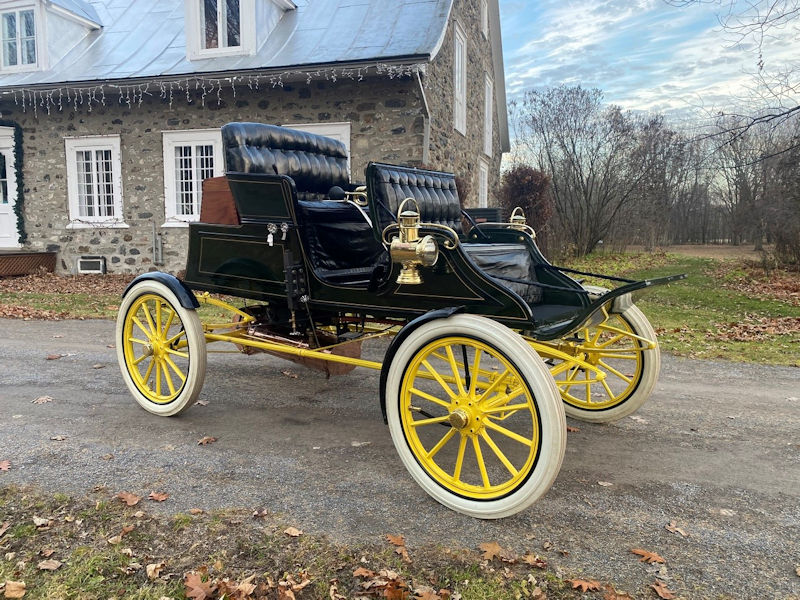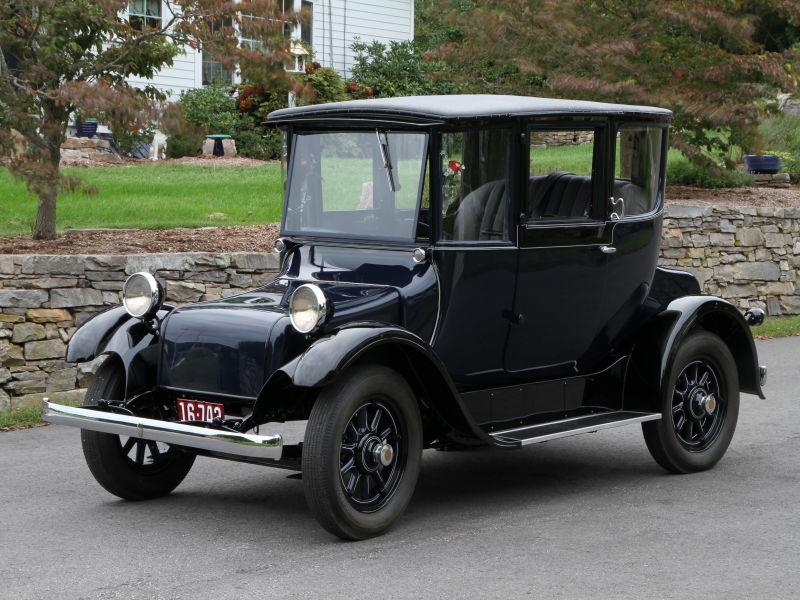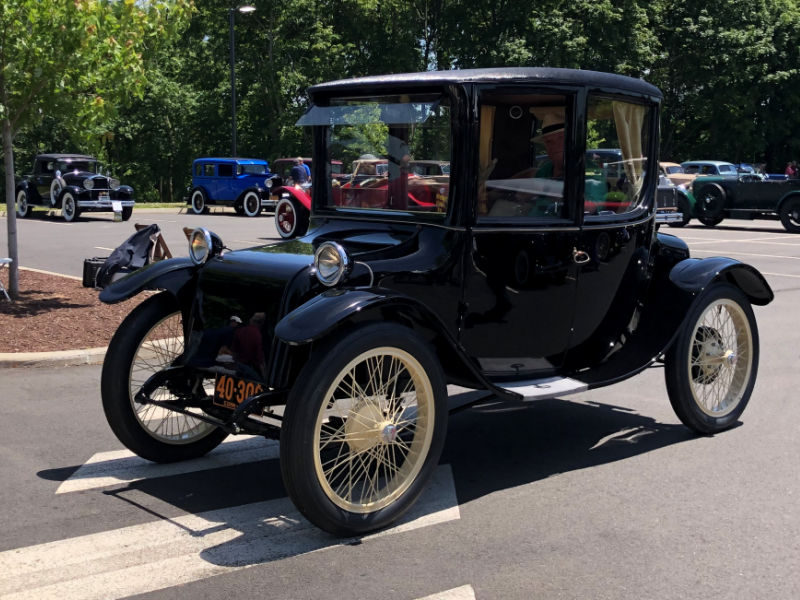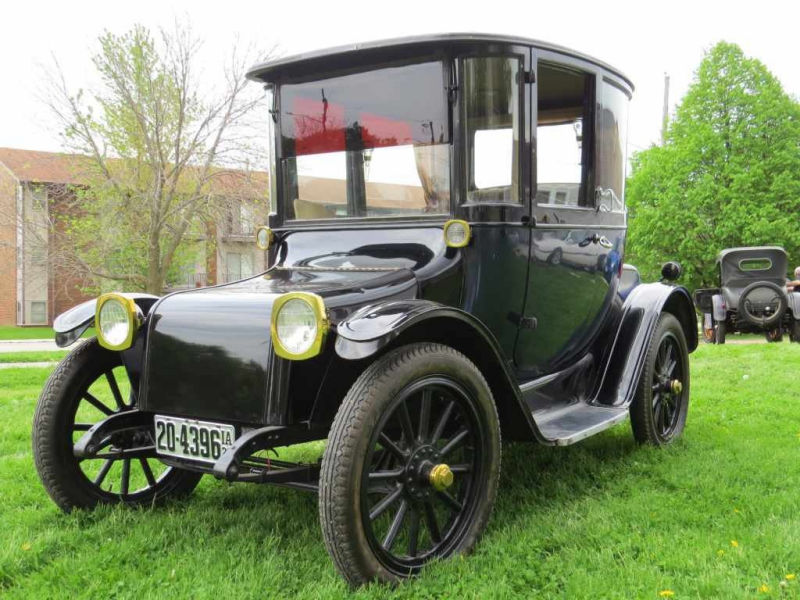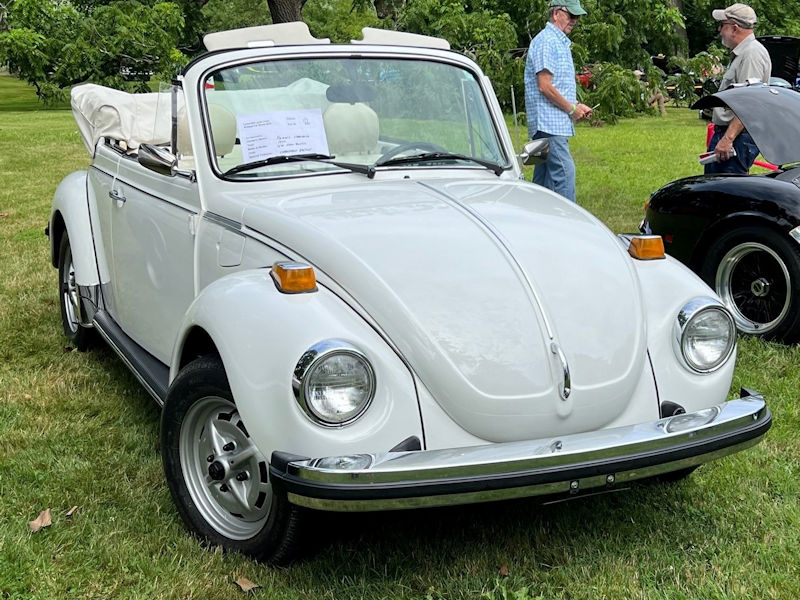1913 Model T Speedster
(VIN IA028886)

This open two-seater Speedster was hand built in the 1980's by Master Craftsman
and Engineer, Bob Petersen of Wolcott, Iowa and is one of thirty speedsters he
has made. It has a sharp looking "Speedster Body" complete with a one-of-a-kind
double-monocle windshield. The cowling and seats were custom made from aircraft
aluminum. This speedster was fabricated from a standard 100" wheelbase Model T
frame that was shortened 6" and lowered 4" with special hangers in rear end.
The engine is a modified 1926 Model T, 4 cylinder engine with superior oil
lubrication characteristics and electric starter The engine head was milled
.125", fitted with aluminum pistons, stainless steel Ford Escort Valves, a Joe
Gemsa performance cam, dippers on rod and polished ports. The speedster has
original wooden "artillery" non-demountable wheels with extra-long hubs, 30x3"
tires on the front and 30x3.5" in the rear and a ten-gallon fuel tank.
Model T Speedster History
Ford introduced the Model T in 1909 and over the next nearly 20 years, produced
more than 15 million at prices that suited the working man's budget ($450 in 1913).
Human nature and human ingenuity didn't take long to turn the Model T Ford's basic
transportation into something a lot more exciting. As Henry Ford and his Model T
put the world on wheels, the youth of the day "backyard engineered" their "Tin
Lizzies" into low slung bug-eyed speedsters, and the Model T as a sports car became
the rage. Through and by 1913, a large "aftermarket" had developed, offering a
wide range of "speed parts" and custom accessories for the basic black Model T.
Speedsters were hand-built on a modified Model T chassis with custom fabricated
parts or from a kit of pre-fabricated parts: radiator, hood, floorboards, rear
gasoline tank, and body that could be purchased for around $100. The Speedster
body wasn't just for looks; it made the Model T go faster by making it lighter,
cutting down the frontal area, and streamlining it. Just making these changes
could add 10 to 15 miles an hour to the top speed. Usually the chassis was
lowered four inches, called "under-slinging", the wheelbase slightly extended,
and the basic 20 HP motor "hotted up", modifications included aluminum pistons,
higher compression heads, larger valves and performance cams. You could use an
earlier cylinder head with shallower combustion chambers, or you could plane
1/8 inch of the existing cylinder head.
Model T's speedsters raced on everything from dirt-track ovals to coast-to-coast
marathons; one won the very first New York to Seattle race in 1909, while a Model
T racer finished 5th in the 1923 Indianapolis 500 at an average speed of 82mph.
Model T's have a three-speed planetary gear-type transmission. The three speed
unit was actually two-speeds forward plus one reverse, no clutch pedal and floor
pedal shifting. Levers operated neutral, the gears and the parking brake and
steering column levers operated the spark advance and the throttle. Suspension
was a transversely mounted semi-elliptical spring for both the front and rear.
View the Gallery for this vehicle
Awards
- Best Costumes/Car - 2015 Town of Groton 4th of July Parade
The Cars
Select a car to learn more about its history.
Our Previous Cars
Below you will find the vehicles which we have owned in the past.
